* Full text of Decision 500/QD-TTg approving Power Plan VIII
DECISION
Approval of the National Power Development Plan for the 2021-2030 period, with a vision to 2050
____________
Article 1. Approving the National Power Development Plan for the 2021-2030 period, with a vision to 2050 (referred to as Power Plan VIII) with the following main contents:
I. PLANNING SCOPE AND BOUNDARIES
Planning for the development of power sources and transmission grids at voltage levels of 220 kV or higher, industry and services on renewable energy and new energy in Vietnam for the period 2021 - 2030, with a vision to 2050, including grid connection projects with neighboring countries.
II. DEVELOPMENT VIEWPOINTS AND GOALS
1. Development perspective
a) Electricity is an important infrastructure sector, electricity development must be one step ahead to create a foundation to promote rapid and sustainable national development, build an independent and self-reliant economy , improve people's lives and ensure national defense and security. Electricity development planning must have a long-term vision, be effective, sustainable and put national and ethnic interests first and foremost.
b) Develop electricity based on the principle of optimizing all factors of power sources, power transmission, power distribution, economical and efficient use of electricity, with a suitable roadmap combined with protection of resources, environment and economic model transformation, ensuring national energy security at the lowest cost.
c) Power development planning must be based on science , inheritance, dynamic and open but not legalize violations. Exploit and effectively use domestic energy resources, combined with reasonable import and export, and use energy economically and efficiently. Consider the development of renewable energy and new energy as an opportunity to develop the overall energy industry ecosystem.
d) The State focuses on investing and encouraging economic sectors to rapidly develop the electricity industry on the principle of fair competition and implementing a market mechanism on electricity prices, ensuring the harmony of interests of entities participating in investment and electricity use and meeting the development requirements of regions.
d) Electricity development must closely follow the development trend of science and technology in the world, especially renewable energy and new energy, associated with the process of transforming the country's economy towards a green economy, circular economy, and low-carbon economy. Energy transition must be consistent with international trends and ensure sustainability, fairness, and justice.
2. Development goals
a) General objectives
- Firmly ensure national energy security, meet the requirements of socio-economic development and industrialization and modernization of the country.
- Successfully implement a fair energy transition associated with production modernization, smart grid construction, advanced power system management, in line with the world's green transition, emission reduction, and scientific and technological development trends.
- Forming a comprehensive energy industrial ecosystem based on renewable energy and new energy.
b) Specific goals
- On ensuring national energy security:
+ Provide sufficient domestic electricity demand, meeting socio-economic development goals with an average GDP growth rate of about 7%/year in the period 2021 - 2030, about 6.5 - 7.5%/year in the period 2031 - 2050:
Commercial electricity: In 2025, about 335.0 billion kWh; in 2030, about 505.2 billion kWh; by 2050, about 1,114.1 - 1,254.6 billion kWh.
Electricity production and import: In 2025, about 378.3 billion kWh; in 2030, about 567.0 billion kWh; by 2050, about 1,224.3 - 1,378.7 billion kWh.
Maximum capacity: In 2025 about 59,318 MW; in 2030 about 90,512 MW; by 2050 about 185,187 - 208,555 MW.
+ Ensure safe and reliable electricity supply, meeting N-1 criteria for important load areas and N-2 for especially important load areas. By 2030, electricity supply reliability will be among the top 4 ASEAN countries, and electricity access index will be among the top 3 ASEAN countries.
+ Strive to have 50% of office buildings and 50% of houses using self-produced and self-consumed rooftop solar power by 2030 (serving on-site consumption, not selling electricity to the national power system).
- On just energy transition:
+ Strongly develop renewable energy sources for electricity production, reaching a rate of about 30.9 - 39.2% by 2030, aiming for a renewable energy rate of 47%, provided that commitments under the Political Declaration establishing the Just Energy Transition Partnership (JETP) with Vietnam are fully and substantially implemented by international partners. By 2050, the renewable energy rate is expected to reach 67.5 - 71.5%.
+ Control greenhouse gas emissions from electricity production to about 204 - 254 million tons in 2030 and about 27 - 31 million tons in 2050. Aim to reach a peak emission level of no more than 170 million tons in 2030, provided that commitments under JETP are fully and substantially implemented by international partners.
+ Building a smart grid system capable of integrating and safely and effectively operating large-scale renewable energy sources.
- On developing industrial ecosystem and renewable energy services:
+ It is expected that by 2030, 02 inter-regional renewable energy industrial and service centers will be formed, including electricity production, transmission and consumption; renewable energy equipment manufacturing industry, construction, installation, related services, building a renewable energy industrial ecosystem in areas with great potential such as the North, South Central, and South when there are favorable conditions.
+ Develop power sources from renewable energy and produce new energy for export. By 2030, the scale of electricity export capacity will reach about 5,000 - 10,000 MW.
III. NATIONAL POWER DEVELOPMENT PLAN
1. Power source development plan
a) Development orientation
- Synchronously develop and diversify types of power sources with a reasonable structure to ensure energy security, enhance the autonomy of the electricity industry, and reduce dependence on imported fuel.
- Continue to promote the development of renewable energy sources (hydropower, onshore and offshore wind power, solar, biomass...), new energy, clean energy (hydrogen, green ammonia...) suitable to the ability to ensure system safety with reasonable electricity prices, especially self-produced and self-consumed power sources, rooftop solar power.
- Exploit and effectively use domestic fossil energy sources combined with imports: Gradually reduce the proportion of coal-fired thermal power, prioritize the development of domestic gas-fired power, develop imported LNG gas power sources with appropriate scale. Implement energy transition closely following the trend of technology development and prices in the world.
- Develop balanced power sources by region, aiming at balancing supply and demand within the region. Reasonable arrangement of power sources in localities in the region to effectively exploit power sources, ensure reliable local power supply, reduce technical losses, and reduce long-distance power transmission.
- Develop new power sources with modern technology along with technological innovation of operating factories. Move towards stopping operations of factories that do not meet environmental standards.
- Diversify investment forms in power source development to increase competition and improve economic efficiency.
b) Development plan
- Accelerate the development of electricity sources from renewable energy (wind power, solar power, biomass power...), continue to increase the proportion of renewable energy in the structure of electricity sources and electricity production:
+ Promote the development of onshore and offshore wind power, solar power in accordance with the absorption capacity of the system, the capacity to release the power grid, reasonable electricity prices and transmission costs associated with ensuring the operational safety and general economy of the power system, making the most of the existing power grid infrastructure. Prioritize and encourage the development of wind power, self-produced and self-consumed solar power (including rooftop solar power of people and construction works, solar power at production and business establishments, on-site consumption, not connected or not selling electricity to the national grid). The orientation of solar power development must be combined with storage batteries when the cost is suitable.
By 2030, onshore wind power capacity will reach 21,880 MW (Vietnam's total technical potential is about 221,000 MW).
Maximize the potential of offshore wind power (about 600,000 MW) to produce electricity and new energy.
By 2030, offshore wind power capacity serving domestic electricity demand will reach about 6,000 MW; the scale can be increased further in case of rapid technology development, reasonable electricity prices and transmission costs. The orientation is to reach 70,000 - 91,500 MW by 2050.
Orientation to strongly develop offshore wind power combined with other types of renewable energy (solar power, onshore wind power, etc.) to produce new energy (hydrogen, green ammonia, etc.) to serve domestic needs and export. Renewable energy sources that produce new energy to serve domestic needs and export are prioritized/allowed to develop without limit on the basis of ensuring national defense and security, energy security and bringing high economic efficiency, becoming a new economic sector of the country.
Estimated offshore wind power capacity for new energy production is about 15,000 MW by 2035 and about 240,000 MW by 2050.
+ Vietnam's solar power potential is about 963,000 MW (ground about 837,400 MW, water surface about 77,400 MW and rooftop about 48,200 MW). From now until 2030, the total capacity of solar power sources is expected to increase by 4,100 MW; by 2050, the total capacity is 168,594 - 189,294 MW, producing 252.1 - 291.5 billion kWh. Of which:
. Prioritize and have breakthrough policies to promote the development of rooftop solar power for people and construction works, especially in areas at risk of power shortages such as the North, and self-produced and self-consumed solar power. From now until 2030, the capacity of this type of power source is estimated to increase by 2,600 MW. This type of power source is prioritized for unlimited capacity development, provided that the cost is reasonable and the existing power grid is utilized, without having to be upgraded.
+ Prioritize and encourage the development of biomass power (potential of about 7,000 MW), electricity produced from garbage and solid waste (potential of about 1,800 MW) to utilize agricultural, forestry and wood processing by-products, promote afforestation and environmental treatment in Vietnam. By 2030, the capacity of these power sources will reach 2,270 MW, with a target of 6,015 MW by 2050. It is possible to develop on a larger scale if there are enough raw materials, high land use efficiency, environmental treatment requirements, grid conditions, electricity prices and reasonable transmission costs.
- Maximize the potential of hydropower sources (Vietnam's total potential is about 40,000 MW) on the basis of ensuring the environment, protecting forests, and securing water resources. Study and selectively expand existing hydropower plants for capacity reserve; exploit hydropower on irrigation lakes and reservoirs to take advantage of hydropower resources. By 2030, the total capacity of hydropower sources, including small hydropower, is expected to reach 29,346 MW, producing 101.7 billion kWh, and can be developed further if economic and technical conditions permit (consider potential projects in Appendix III). By 2050, the total capacity will reach 36,016 MW, producing 114.8 billion kWh.
- Storage power source:
+ Develop pumped storage hydropower plants with a capacity of about 2,400 MW by 2030 to regulate load, reserve capacity and support the integration of large-scale renewable energy sources.
+ Storage batteries are developed when they are reasonably priced, distributed near wind power, solar power or load centers. By 2030, the expected capacity is about 300 MW.
+ By 2050, the capacity of pumped storage hydropower and storage batteries is expected to reach 30,650 - 45,550 MW to match the high proportion of renewable energy.
- Prioritize and encourage the development of cogeneration power plants, power plants using residual heat, blast furnace gas, and by-products of technological lines in industrial establishments. By 2030, the expected capacity of these sources is 2,700 MW and by 2050, it is expected to be about 4,500 MW. The scale of development of this type can be higher, suitable for the needs and potential of industrial establishments nationwide to increase energy efficiency.
- Coal-fired thermal power: Only continue to implement projects that are included in the adjusted Power Plan VII and are being invested in construction until 2030. Orientation to implement fuel conversion to biomass and ammonia for plants that have been operating for 20 years when the cost is suitable. Stop operating plants that are over 40 years old if fuel conversion is not possible.
+ By 2030, the total capacity of operating factories and projects under construction is likely to be completed and put into operation at about 30,127 MW. Urgently complete 6 projects /6,125 MW under construction: Na Duong II, An Khanh - Bac Giang, Vung Ang II, Quang Trach I, Van Phong I, Long Phu I. Do not deploy 13,220 MW of coal-fired thermal power: Quang Ninh III, Cam Pha III, Hai Phong III, Quynh Lap I, II, Vung Ang III, Quang Trach II, Long Phu II, III, Tan Phuoc I, II. Convert Quang Trach II project to use LNG before 2030.
+ Orientation by 2050, no longer using coal for electricity generation, completely switching fuel to biomass and ammonia, total capacity 25,632 - 32,432 MW, producing 72.5 - 80.9 billion kWh.
- Gas-fired thermal power: Prioritize the maximum use of domestic gas for power generation. In case of a decrease in domestic gas output, supplement with natural gas or LNG. Develop projects using LNG and synchronous LNG import infrastructure with appropriate scale, using modern technology. Implement a roadmap for fuel conversion to hydrogen when the technology is commercialized and the price is suitable.
+ Domestic gas-fired thermal power: Focus on accelerating the implementation of the Block B and Blue Whale gas-fired power projects, including investing in the construction of 6,900 MW of gas-fired thermal power plants: O Mon II, III, IV (3,150 MW), Mien Trung I, II and Dung Quat I, II, III (3,750 MW); converting O Mon I (660 MW) to use Block B gas. Implement the Quang Tri combined cycle gas turbine plant (TBKHH) (340 MW) using Bao Vang gas. Accelerate the exploration and appraisal of the Ken Bau gas field to plan the development of the gas field and add downstream power plants (oriented in the Hai Lang - Quang Tri, Chan May - Thua Thien Hue areas) if conditions permit. Do not implement the Kien Giang 1 and 2 projects (2x750 MW) due to the inability to determine the fuel source.
Southeast region: Implement solutions, focus on infrastructure construction, research domestic and regional connections to serve natural gas and LNG imports to ensure gas sources for Phu My, Ba Ria, and Nhon Trach power plants.
Southwestern region: Implement solutions, invest in infrastructure construction, research domestic and regional connections to serve natural gas and LNG imports to ensure gas sources for power plants in Ca Mau.
By 2030, the total capacity of domestic gas plants will reach 14,930 MW, producing 73 billion kWh. By 2050, about 7,900 MW will continue to use domestic gas or switch to LNG, producing 55.9 - 56.9 billion kWh of electricity; 7,030 MW is expected to switch to using hydrogen completely, producing 31.6 - 31.9 billion kWh of electricity.
+ LNG thermal power: Limit the development of power sources using LNG if there are alternative plans to reduce dependence on imported fuels, and extend the progress of the Long Son LNG project (1,500 MW) which has been approved to supplement the adjusted power planning VII to the period 2031 - 2035. By 2030, the total capacity of LNG power sources will reach a maximum of 22,400 MW, producing 83.5 billion kWh. By 2050, LNG plants will gradually switch to using hydrogen, with a total capacity of 25,400 MW, producing 129.6 - 136.7 billion kWh.
Continue to implement LNG import port and warehouse projects in Thi Vai (supplying gas for Nhon Trach 3 and 4 and supplementing gas for factories in the Southeast region), Son My (supplying gas for Son My I, II). Develop a system of LNG import ports and warehouses in sync with the power plants in the planning.
- Flexible power sources (quick start sources): Invest in developing flexible power sources to regulate loads, maintain stability of the power system to absorb large-scale renewable energy sources. By 2030, it is expected to develop 300 MW. By 2050, it will reach 30,900 - 46,200 MW.
- Electricity import and export: Effectively connect and exchange electricity with countries in the region, ensure the interests of all parties, enhance the safety of the power system; promote electricity import from Southeast Asian countries (ASEAN) and the Greater Mekong Subregion (GMS) with hydropower potential. Pay attention to investing and exploiting electricity sources abroad to supply electricity to Vietnam. In 2030, import about 5,000 MW from Laos according to the Agreement between the two Governments, producing 18.8 billion kWh; can increase to 8,000 MW. By 2050, import about 11,000 MW, producing 37 billion kWh on the basis of balance with export to ensure overall optimal efficiency.
Prioritize the unlimited development of renewable energy sources for export, production of new energy (hydrogen, green ammonia, etc.) on the basis of ensuring energy security and bringing high economic efficiency. Strive to have the scale of electricity export capacity reach about 5,000 - 10,000 MW by 2030.
Continue to implement small hydropower projects, wind power, cogeneration power sources, power sources using residual heat, blast furnace gas, by-products of technological lines in industrial facilities, biomass power, biogas, electricity produced from waste, solid waste and connection plans that have been approved for planning but must ensure compliance with legal regulations, requirements on criteria, and justifications for priority projects.
Medium and large coal, gas and hydropower power projects in the adjusted Power Plan VII that have not been put into operation are adjusted in this Plan.
For solar power projects whose planning has been approved, whose investment policy has been approved by competent authorities and assigned to investors, the specific progress will be considered in the Implementation Plan of Power Plan VIII according to the provisions of the law on planning, the law on investment and other relevant legal provisions, ensuring security, balancing sources, loads, suitable grid infrastructure, economic efficiency, reasonable electricity prices and transmission costs. Solar power projects that have been planned for the period 2021 - 2030 but have not been assigned to investors will not be allowed to be implemented but will be considered after 2030, except for cases of implementation in the form of self-production and self-consumption on the basis of non-legalization if there are violations of planning, land and other legal provisions (Appendix IV).
c) Power source structure
- By 2030:
Total capacity of power plants serving domestic demand is 150,489 MW (excluding exports, existing rooftop solar power, renewable energy for new energy production), of which:
+ Onshore wind power 21,880 MW (14.5% of total capacity of power plants);
+ Offshore wind power 6,000 MW (4.0%), in case technology progresses rapidly, electricity price and transmission cost are reasonable, then develop on a larger scale;
+ Solar power 12,836 MW (8.5%, excluding existing rooftop solar power), including concentrated solar power sources 10,236 MW, self-produced and self-consumed solar power sources of about 2,600 MW. Self-produced and self-consumed solar power sources are prioritized for development with unlimited capacity;
+ Biomass electricity, electricity produced from waste 2,270 MW (1.5%), in case of sufficient raw material sources, high land use efficiency, environmental treatment requirements, grid infrastructure allows, electricity price and transmission costs are reasonable, then develop on a larger scale;
+ Hydropower 29,346 MW (19.5%), can be developed further if economic and technical conditions allow;
+ Pumped storage hydropower 2,400 MW (1.6%);
+ 300 MW storage battery (0.2%);
+ Cogeneration electricity, using residual heat, blast furnace gas, and by-products of technological lines in industrial facilities: 2,700 MW (1.8%), the scale can be increased to suit the capacity of industrial facilities;
+ Coal-fired thermal power 30,127 MW (20.0%), except for projects in Table 3, Appendix II;
+ Domestic gas-fired thermal power 14,930 MW (9.9%);
+ LNG thermal power 22,400 MW (14.9%);
+ Flexible power source 300 MW (0.2%);
+ Import electricity 5,000 MW (3.3%), can be up to 8,000 MW.
With coal power sources facing difficulties in deployment, the processing will be updated to replace them with LNG or renewable energy sources.
- Orientation 2050:
Total capacity of power plants 490,529 - 573,129 MW (excluding exports, renewable energy for new energy production), of which:
+ Onshore wind power 60,050 - 77,050 MW (12.2 - 13.4%);
+ Offshore wind power 70,000 - 91,500 MW (14.3 - 16%);
+ Solar power 168,594 - 189,294 MW (33.0 - 34.4%);
+ Biomass electricity, electricity produced from waste 6,015 MW (1.0 - 1.2%);
+ Hydropower 36,016 MW (6.3 - 7.3%);
+ Storage power source 30,650 - 45,550 MW (6.2 - 7.9%);
+ Cogeneration electricity, using residual heat, blast furnace gas, and by-products of technological lines in industrial facilities 4,500 MW (0.8 - 0.9%);
+ 0 MW (0%) coal-fired thermal power plant, no longer using coal to generate electricity;
+ Thermal power using biomass and ammonia 25,632 - 32,432 MW (4.5 - 6.6%);
+ Domestic gas-fired thermal power and conversion to use LNG 7,900 MW (1.4 - 1.6%);
+ Domestic gas-fired thermal power switched to run entirely on hydrogen 7,030 MW (1.2 - 1.4%);
+ LNG thermal power plant with hydrogen combustion 4,500 - 9,000 MW (0.8 - 1.8%);
+ LNG thermal power converted to run entirely on hydrogen 16,400 - 20,900 MW (3.3 - 3.6%);
+ Flexible power source 30,900 - 46,200 MW (6.3 - 8.1%);
+ Electricity import 11,042 MW (1.9 - 2.3%).
2. Grid development plan
a) Development orientation
- Develop a power transmission system in sync with the progress of power sources and the load development needs of localities, using modern technology, ensuring international standards, and being ready for regional connectivity. Develop a smart grid to integrate renewable energy sources on a large scale, meeting the requirements for safe, stable, and economical power system operation.
- Developing the 500 kV and 220 kV transmission grids to ensure the capacity of power plants, improve the reliability of power supply, reduce power loss, and meet the N-1 criteria for important load areas and N-2 for especially important load areas. Developing the transmission grid with long-term backup, increasing the use of multi-circuit and multi-voltage level poles to reduce land area. Encouraging the construction of combined transmission transformer stations to supply power to neighboring loads.
- The 500 kV transmission grid plays a pivotal role in connecting regional power systems and exchanging electricity with countries in the region. Limit inter-regional transmission to a reasonable level, reduce long-distance transmission, and minimize the construction of new inter-regional transmission lines before 2030.
- Construct a 220 kV power grid to ensure reliability, transformer stations in areas with high load density are designed according to a diagram to ensure flexible operation. Construct 220 kV transformer stations that are qualified for automatic operation without personnel. Accelerate the construction of GIS transformer stations, 220/22 kV transformer stations, underground stations at load centers.
- Research on the application of Back-to-Back system, flexible power transmission equipment to improve transmission capacity, minimize land area. Organize research on AC and DC power transmission technology with voltage above 500 kV.
- After 2030, the orientation is to develop ultra-high voltage DC transmission lines connecting the Central Central, South Central and Northern regions to strongly exploit the potential of offshore wind power. Research on connections across Asia - Pacific.
Power transmission grid projects in the adjusted Power Plan VII that have not been put into operation are adjusted in this Plan.
b) Transmission grid construction volume
- Phase 2021 - 2030: New construction of 49,350 MVA and renovation of 38,168 MVA of 500 kV transformer stations; new construction of 12,300 km and renovation of 1,324 km of 500 kV lines; new construction of 78,525 MVA and renovation of 34,997 MVA of 220 kV transformer stations; new construction of 16,285 km and renovation of 6,484 km of 220 kV lines.
- Orientation for the period 2031 - 2050: Newly build 40,000 - 60,000 MW of HVDC stations and 5,200 - 8,300 km of HVDC lines; newly build 90,900 - 105,400 MVA and renovate 117,900 - 120,150 MVA of 500 kV transformer stations; newly build 9,400 - 11,152 km and renovate 801 km of 500 kV lines; newly build 124,875 - 134,125 MVA and renovate 105,375 - 106,750 MVA of 220 kV transformer stations; Newly built 11,395 - 11,703 km, renovated 504 - 654 km of 220 kV lines. The volume of the grid phase 2031 - 2050 will be accurate in the subsequent electricity planning.
3. Link the grid with countries in the region
- Continue to study cooperation, link the grid with sub -regional subrocations of the Mekong and ASEAN countries at 500 kV and 220 kV voltage levels to enhance the ability to link the system, exchange electricity, take advantage of the resources of the nations.
- Perform the grid link with Laos by 500 kV and 220 kV lines to import electricity from power plants in Laos according to the Memorandum of Understanding of cooperation signed between the two governments.
- Maintain the grid link with neighboring countries through the voltage levels of 220 kV, 110 kV, and existing medium -voltage; Research on the implementation of asynchronous solutions between electrical systems by one -way conversion stations - alternating at 220-500 kV voltage level.
- Constructing works connecting electricity export projects with high economic efficiency on the basis of ensuring energy security and national defense and security.
4. Rural electricity development orientation
Building a new rural, mountainous and island power supply program to grant households who do not have electricity and improve the existing rural grid. Implementing electricity from the national power grid, combined with electricity supply from renewable energy sources for rural, mountainous and island areas; Strive for 100% of rural households to have electricity until 2025.
5. Orientation for developing industrial ecosystems and services on renewable energy
- It is expected that by 2030, 02 inter-regional renewable energy industrial and service centers will be formed in areas with great potential such as the North, South Central, and South when conditions permit.
- The inter -regional industrial energy center and service center is expected to include 2,000 - 4,000 MW Renewable Energy Plants (mainly offshore wind power); Renewable energy equipment factories, new energy production equipment; equipment and means of transportation, construction and installation of renewable energy equipment; auxiliary services; Green industrial parks, low carbon emissions; Research center, renewable energy training institutions.
6. Investment capital needs
- Phase 2021 - 2030: Estimated total investment capital for development and transmission grid equivalent to 134.7 billion USD, of which investment in the power supply is about 119.8 billion USD (average 12.0 billion USD/year), the transmission grid is about 14.9 billion USD (an average of US $ 1.5 billion/year).
- Orientation of the period 2031-2050: Estimated demand for investment capital development and transmission grid equivalent to 399.2 - 523.1 billion USD, of which investment in the power supply is about 364.4 - 511.2 billion USD (average 18.2 - 24.2 billion USD/year), the transmission grid is about 34.8 - 38.6 billion USD (average 1.7 - 1.9 billion USD/year, will be accurate in the planned planning subsequent planning.
IV. Orientation of land use arrangement for the development of electricity works and environmental protection activities, response to climate change and ecological conservation, landscape, monument
1. Land use arrangement for power development
The demand for land for development and electric infrastructure of electricity is about 89.9 - 93.36 thousand hectares in the period of 2021 - 2030 and about 169.8 - 195.15 thousand hectares of the period 2031 - 2050, in accordance with the land allocation target in Resolution 39/2021/QH15, to ensure the implementation of electricity development goals.
2. Activities to protect the environment, respond to climate change and preserve ecology, landscapes and relics
Perform powerful energy moves from fossil fuels to renewable energy and new energy to reduce pollution emissions and greenhouse gases, meeting the target of net emissions equal to "0" by 2050.
Apply new, modern technology towards a shift to a low-carbon economy, reduce energy consumption, reduce emissions, and aim to meet regulations on carbon emissions per unit of exported goods and carbon markets.
Avoid and minimize the development of energy projects and energy infrastructure in locations that pose a risk of affecting forests, nature reserves and biodiversity, natural heritage, relics and ranked cultural heritage.
It is necessary to take into account solutions against climate change and respond to extreme weather phenomena such as drought, flooding, floods, landslides, hot sun, rainfall, sea level rise ... In the process of implementing electricity projects for safe, stable operation, minimizing risks and damage.
V. An important project portfolio, priority investment of the electricity industry and the order of priority
1. Criteria and argument for construction of important project portfolio, priority investment of electricity industry
The list of important projects, the investment target of the electricity industry is built on the following criteria and arguments:
- The projects play an important role in balancing national and regional electricity supply and demand, and important load centers to ensure electricity supply security and meet the needs of socio-economic development.
- Projects to ensure national defense and security; Projects to ensure economic general benefits combined with national security and defense.
- Projects need to be implemented to ensure the uniformity between electricity development planning and other energy plannings.
- Projects to increase power supply to areas at risk of power shortages.
- Projects to ensure safety and security of the national power system between baseload power sources, renewable energy sources and loads (hydroelectric power, energy storage batteries...).
- Projects that contribute to adapting to climate change, reducing greenhouse gas emissions, environmental protection (biomass, electricity produced from garbage, solid waste, co -generation, use of residual gas ...), implementing climate commitments.
- Self -production and self -consumption projects.
- Projects contribute to creating an overall ecosystem of industry and renewable energy services.
- Projects on electricity exports, new energy exports produced from renewable energy.
- Effective land use projects.
- 500 kV and 220 kV power grid projects.
- Feasibility in deployment.
- Application of advanced technology, environmentally friendly.
- High socio -economic efficiency.
2. List of important projects, priority investment
The list of important and priority projects is given to the Appendix I and II.
Vi. Solutions and resources to implement planning
1. Solutions to ensure power supply security
- Diversify fuel sources used for power generation, harmoniously combining domestic and imported primary energy sources.
- Promote search and exploration to increase the reserves and output of domestic coal and gas exploitation for electricity production to reduce dependence on import fuel.
- Investing in technical infrastructure for natural gas import, LNG, coal imports, in accordance with thermal power source structure and energy movement trend.
- Develop strongly renewable energy sources to replace fossil energy sources. Promptly update scientific and technological advances in the world for new energy sources (hydrogen, ammonia ...) to use for electricity generation.
- Research and application of fuel conversion technology of coal thermal power plants, gas to biomass, ammonia, hydrogen ...
- Organize research and evaluate the potential of non-traditional energy sources.
2. Solutions to generate capital and mobilize capital to invest in electricity development
- Research and perfect financial mechanisms and mobilize capital for investment in electricity development.
- Diversify capital sources, forms of capital mobilization, effectively attract capital sources at home and abroad to develop electricity, ensure national defense, security and competition in the electricity market. Enhancing calls and effective use of international support commitments (JETP, Azec ...), green credit sources, climate credit, green bonds ...
- Diversifying forms of investment (state, private, public -private partnership ...) for electricity projects. Promoting the role of state -owned enterprises, strongly attracting domestic and foreign private sectors to invest in electricity development. Continuing to negotiate and effectively use funding sources, support capital arrangement of international partners in the process of energy transfer and towards net emissions equal to "0" of Vietnam.
- Encourage people and businesses to invest in developing solar power roofs, self -producing and self -consumption power sources.
- Create a favorable, transparent, attractive and encouraging environment for the private sector to participate in investing and developing power projects.
- Gradually increase the financial mobilization of enterprises in the field of electricity at the request of domestic and international financial institutions.
- Implement flexible and effective credit policies, creating favorable conditions for businesses to access capital sources to develop electricity projects.
3. Legal and policy solutions
- Completing policies and laws on electricity development, renewable energy development (including roof solar power, self -produced, self -consumption solar power), economical, efficient use of electricity and other relevant regulations:
+ Develop amended Electricity Law to complete the policies on investment, planning, administration of electricity prices, develop competitive electricity markets, handle problems, institutionalize development mechanisms, create breakthroughs to encourage and promote strong development of renewable energy sources; Separating the role of state management with business production of enterprises.
+ Research on building auction mechanism, bidding for investors to select investors with electricity prices in the process of amendment of the Electricity Law and complete the competitive electricity market model.
+ Research and concretize the policy of socialization of investment in the transmission grid.
+ Promulgating the pilot, proceeding to formulate the official mechanism of electricity purchase contracts directly between renewable power manufacturers and customers consuming synchronously with the amendment of the Electricity Law and the roadmap for competitive electricity market. Research on construction regulations on charges for direct electricity purchase contracts (DPPA).
+ Continuing to improve the mechanism of electricity price management according to the market mechanism with the regulation of the State, ensuring harmonious combinations between the political - socio -economic goals of the State and the goals of production and business, financial autonomy of electricity industry enterprises. Electricity price guaranteed to recover sufficient costs, reasonable profits, attract investment in electricity development, encourage competition in the production, transmission, distribution, retail, electricity and anti -wasting. Continue to improve and complete the current electricity price schedule. Research on the price of two components at the right time. Continue to perform transparency of electricity.
+ Research, develop and promulgate the Law on Renewable Energy.
+ Amending the Law on Energy Effective and Effective Energy to create a strong change in reducing the strength of the economy, promulgating sanctions and standards and regulations on energy efficient use.
- Develop mechanisms and policies to encourage domestic enterprises to participate in developing renewable energy, developing renewable energy and new energy industries for domestic use and export, and developing the electrical equipment manufacturing industry.
- Develop policies to improve the localization rate in the electricity industry to improve independence and autonomy and reduce costs.
- Develop policies to promote electricity imports, especially from Laos through the Agreement and Memorandum of Memorandum between the two governments ...
4. Solutions for environmental protection, natural disaster prevention and control
- Perform energy movement, in which the focus is converting from fossil fuels to renewable energy and new energy; Increase the size of the absorption tank and promote the application of carbon seizure technology.
- Research, application and development of waste treatment technology, especially from renewable energy industry according to the principle of reducing, recovering, reusing and recycling to minimize the amount of waste and take advantage of waste materials as raw materials for other economic sectors.
- Implement solutions for natural disaster prevention and control, climate change response and extreme weather phenomenon right from the process of selecting project location, design and construction construction to production and operation.
- Minimize the development of electrical works and infrastructure in places that are at risk of affecting natural forests, nature reserves and biodiversity, natural heritage, relics and cultural heritage have been ranked, suitable to the national environmental protection partition.
5. Solutions on science and technology
- Invest in research and development (R&D) on electricity. Establishing basic research centers and renewable energy development centers, new energy, carbon storage technology in Vietnam to improve the level, receive and transfer technology and management to accelerate and expand the scale of renewable energy and manage clean electricity systems in Vietnam and the region.
- Using modern technology for new construction electrical works; gradually upgrade, renovate and convert existing works.
- Renovating and upgrading electricity transmission and distribution systems, improving reliability, reducing power loss. Accelerate the roadmap for building smart grids.
- Modernizing data information systems, automation systems, control for moderation, electricity system operation and electricity market. Access to new scientific and technological achievements, artificial intelligence, and connection with all things, including digital transformation in the electricity industry.
- Gradually apply measures to encourage and require innovation in technology and equipment of economic sectors that use a lot of electricity.
6. Solutions for economical and efficient use of electricity
- Enhancing awareness of economical and efficient use of energy, environmental protection is an important national policy and responsibility of the whole society as the spirit of Resolution No. 55-NQ/TW of February 11, 2020 of the Politburo.
- Encourage investment and use of energy-saving technology and equipment; strengthen energy audits; promote the implementation of energy service company models.
- Applying mandatory standards and regulations together with effective use of electricity use for areas and branches with high electricity consumption.
- Promote the implementation of electricity demand management programs (DSM), economical and efficient use of energy programs.
7. Solutions on human resource development
- Develop high quality human resources, especially in the fields of generating, transmitting, distributing, moderation, electricity market, smart grid ...
- Building a team of highly qualified experts and scientists in the field of electricity; Building strong units in science and technology.
- Organize training and retraining of technical staff and management of electricity industry on par with countries in the region and the world.
- Innovate training programs and content, diversify forms of human resource training, link training with actual production, ensure sufficient capacity to operate large-scale power systems, integrate a high proportion of renewable energy sources, and apply smart grid technology.
8. Solutions on international cooperation
- Actively and effectively implement the contents of the political statement to establish a fair energy transformation partnership (JETP) with international partners, make the most of the support of international partners in technology transfer, management, human resource training, financial supply, and JETP as an important solution for the process of energy transfer in Vietnam.
- Implement flexible, effective, equal, and mutually beneficial energy and climate foreign policies. Expand and deepen energy cooperation with strategic and important partners.
- Promoting cooperation in researching and deploying power grid connection with neighboring countries, countries in Southeast Asia, the Mekong sub -region expansion (GMS).
- Expanding international cooperation on scientific research and electricity technology development, taking advantage of technology transfer and capital from foreign partners.
9. Solutions to enhance domestic capacity, localize electrical equipment, and develop the electrical engineering industry
- Establish renewable energy industry centers, create complete renewable energy industrial ecosystems, associated with manufacturing production, auxiliary services, centralized industrial parks.
- Focus on developing the renewable energy equipment industry, power storage equipment, technology recovery, absorption, storage and use of carbon ... in the country to proactively exploit the available potential of our country, increase independence and autonomy, reduce the cost of electricity production from renewable energy.
- Encourage domestic enterprises to carry out complex, high-tech power projects. Improve the design, procurement, and project management capacity of domestic enterprises, so that they are capable of taking on the role of general contractor for large-scale power projects.
- Improve the capacity of designing and manufacturing domestic equipment to increase the proportion of domestic equipment in source and grid works; improve the capacity of repairing, maintaining and testing electrical equipment in the water.
10. Solutions on organization and management, improving the efficiency of electricity operations
- Strongly renovate the electricity industry management in the direction of publicity, transparency, competition, efficiency, increasing labor productivity, reducing costs, in accordance with the socialist -oriented market economy institution.
- Implementing the restructuring of the electricity industry in accordance with the approved competitive electricity market roadmap.
- Innovate and improve the efficiency of state-owned enterprises in the electricity sector, apply advanced governance models and practices, improve international credit ratings, and implement openness and transparency in operations.
11. Solutions on organization, implementation and supervision of planning implementation
- Urgently develop a plan to implement the planning after the VIII electricity planning is approved. Choose priority projects based on criteria and evidence stated in Clause 1, Section V, Article 1 of this Decision.
- Build a database for the electricity sector, including data on planning and planning implementation to serve as a basis for monitoring the implementation of the planning. Regularly review the load development situation nationwide and in localities, the progress of power source and grid projects to propose solutions to adjust the power source structure and progress if necessary, ensuring the supply and demand of electricity in the economy.
- Effectively manage the development of self -producing, self -consumption power sources, co -power sources, excess heat, blast furnace, and by -products of technological lines in industrial facilities, roof solar power sources and electricity sources generated and purchased by electricity agreement directly with each other.
- Further promoting the role of the National Steering Committee on electricity development in inspecting and urging key projects on electricity, promptly removing difficulties and obstacles.
- Develop and apply the institution of discipline and compliance in organizing the implementation of the VIII Electricity Plan for investors, ministries, branches and State Capital Management Committee in enterprises and localities. Formulating sanctions for handling and recovering projects slowly, not implementing according to the assigned progress.
Article 2. Implementation
1. Ministry of Industry and Trade
a) Responsible for the accuracy of data, documents, systems, maps and databases in the planning dossier, ensuring consistency with the content of this Decision.
b) Organize the announcement of the plan in accordance with the regulations and implement this Decision associated with the implementation of socio -economic development tasks in accordance with the law; Develop a plan to implement the planning based on the criteria and certification specified in this Decision to implement the objectives and tasks set out in the planning; Organize evaluation of the implementation of the planning in accordance with the Planning Law. Completed submission to the Prime Minister the plan to implement the plan in June 2023.
c) To assume the prime responsibility for, and coordinate with ministries, branches and localities to complete and submit to the Government of the amended Electricity Law and the Law on Renewable Energy for submission to the National Assembly in 2024. To submit to the Government for promulgation of direct electricity trading policies.
d) To assume the prime responsibility for, and coordinate with ministries, branches and People's Committees of provinces and centrally -run cities, continue working with investors, carefully review the provisions of law, commitments and agreements between the parties to completely handle projects in Table 3 of Appendix II are having difficulties in deploying and reporting to the Prime Minister on issues exceeding their competence.
2. The ministries, branches, the State Capital Management Committee in enterprises
Fulfill the functions, tasks and powers to implement the projects in the VIII Electrical Planning; Proposing mechanisms, policies and solutions to remove obstacles to effectively implement the goals of the planning, ensuring consistency and synchronization with the implementation of the socio -economic development strategy 10 years 2021 - 2030, socio -economic development plans of each branch and local.
3. People's Committees of provinces and cities directly under the Central Government
Organize the selection of investors of electricity projects, arrange land funds for the development of electricity works in accordance with law; Assume the prime responsibility for, and coordinate with investors to conduct site clearance, compensation, migration and resettlement for electricity and grid projects as prescribed.
4. Vietnam Electricity Group
- Tell the main role in ensuring stable and safe electricity supply for socio -economic development. Investing in power projects and transmission grids according to the assigned tasks.
- Regularly review and evaluate the balance of supply and demand, the status of operating the national and regional electricity systems, reporting to the competent authorities.
- Thoroughly implement solutions to innovate corporate governance, improve production and business efficiency, increase labor productivity, reduce power losses, save costs and reduce costs.
5. Vietnam Oil and Gas Group
- Enhancing search, exploration and exploitation of domestic gas sources to provide power generation, suitable for the needs of electric load. Quickly and effectively deploy the gas fields, blue whales, trumpets ... according to the approved schedule.
- Implement solutions to build warehouse and port infrastructure, connect the domestic gas system and the area to serve the import of natural gas and LNG to ensure the gas source for power plants.
- Carry out the schedule of the assigned power projects.
6. Vietnam Coal - Mineral Industry Group, Northeast Corporation
- Tell the main role in ensuring coal supply for electricity production in accordance with the energy movement roadmap. In the immediate future, improve the capacity of domestic coal production, combined with coal imports to provide fuel for power plants.
- Investing in power projects according to the assigned tasks.
Article 3. This Decision takes effect from the date of signing.
Article 4. Ministers, heads of ministerial -level agencies and heads of government -attached agencies; Presidents of People's Committees of provinces and cities directly under the Central Government; Chairman of the Board of Members, General Director of Vietnam Electricity Group, Vietnam Oil and Gas, Vietnam Coal - Mineral Industry; President, General Director of Northeast Corporation and relevant agencies are responsible for implementing this Decision.
d) To assume the prime responsibility for, and coordinate with ministries, branches and People's Committees of provinces and centrally -run cities, continue working with investors, carefully review the provisions of law, commitments and agreements between the parties to completely handle projects in Table 3 of Appendix II are having difficulties in deploying and reporting to the Prime Minister on issues exceeding their competence.
2. The ministries, branches, the State Capital Management Committee in enterprises
Fulfill the functions, tasks and powers to implement the projects in the VIII Electrical Planning; Proposing mechanisms, policies and solutions to remove obstacles to effectively implement the goals of the planning, ensuring consistency and synchronization with the implementation of the socio -economic development strategy 10 years 2021 - 2030, socio -economic development plans of each branch and local.
3. People's Committees of provinces and cities directly under the Central Government
Organize the selection of investors of electricity projects, arrange land funds for the development of electricity works in accordance with law; Assume the prime responsibility for, and coordinate with investors to conduct site clearance, compensation, migration and resettlement for electricity and grid projects as prescribed.
4. Vietnam Electricity Group
- Tell the main role in ensuring stable and safe electricity supply for socio -economic development. Investing in power projects and transmission grids according to the assigned tasks.
- Regularly review and evaluate the balance of supply and demand, the status of operating the national and regional electricity systems, reporting to the competent authorities.
- Thoroughly implement solutions to innovate corporate governance, improve production and business efficiency, increase labor productivity, reduce power losses, save costs and reduce costs.
5. Vietnam Oil and Gas Group
- Enhancing search, exploration and exploitation of domestic gas sources to provide power generation, suitable for the needs of electric load. Quickly and effectively deploy the gas fields, blue whales, trumpets ... according to the approved schedule.
- Implement solutions to build warehouse and port infrastructure, connect the domestic gas system and the area to serve the import of natural gas and LNG to ensure the gas source for power plants.
- Carry out the schedule of the assigned power projects.
6. Vietnam Coal - Mineral Industry Group, Northeast Corporation
- Tell the main role in ensuring coal supply for electricity production in accordance with the energy movement roadmap. In the immediate future, improve the capacity of domestic coal production, combined with coal imports to provide fuel for power plants.
- Investing in power projects according to the assigned tasks.
Article 3. This Decision takes effect from the date of signing.
Article 4. Ministers, heads of ministerial -level agencies and heads of government -attached agencies; Presidents of People's Committees of provinces and cities directly under the Central Government; Chairman of the Board of Members, General Director of Vietnam Electricity Group, Vietnam Oil and Gas, Vietnam Coal - Mineral Industry; President, General Director of Northeast Corporation and relevant agencies are responsible for implementing this Decision.
Source

















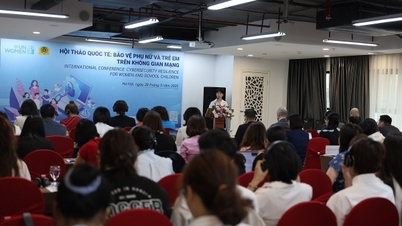




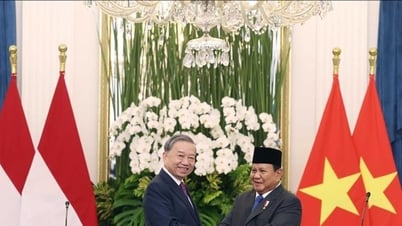
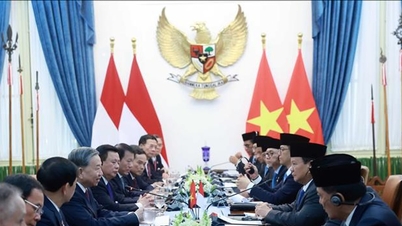

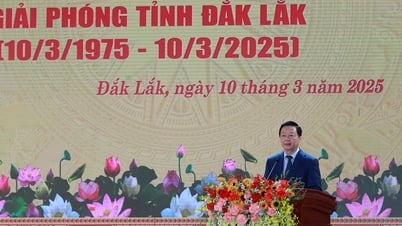
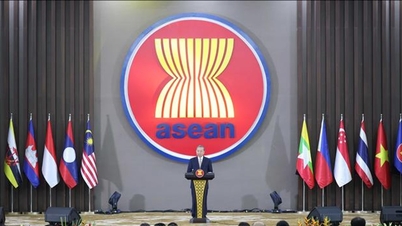





































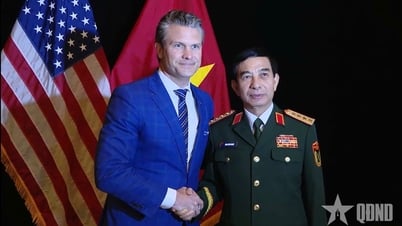









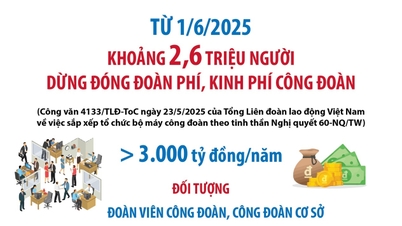





















Comment (0)